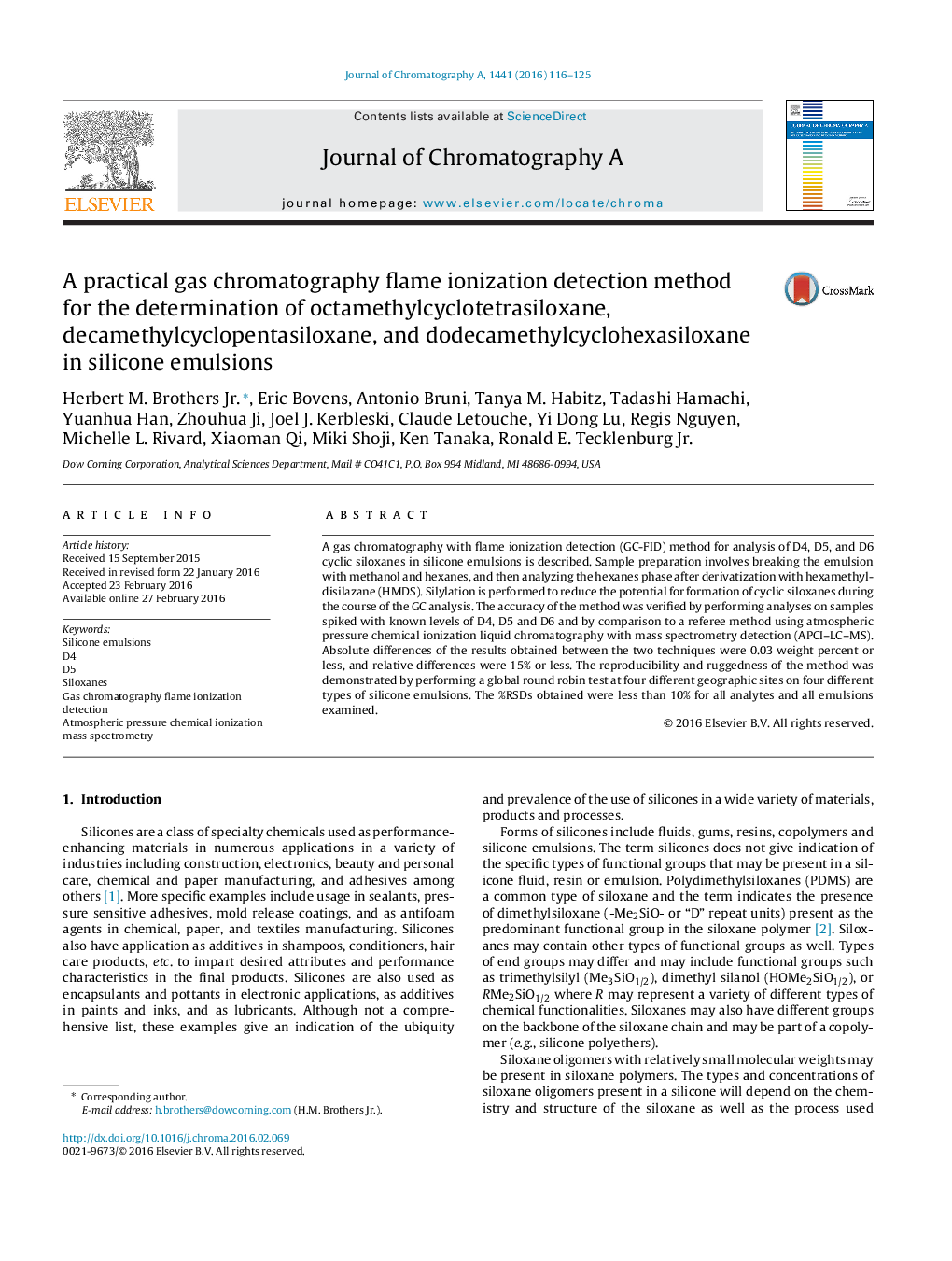| Article ID | Journal | Published Year | Pages | File Type |
|---|---|---|---|---|
| 1198773 | Journal of Chromatography A | 2016 | 10 Pages |
•GC-FID method for analysis of cyclic siloxanes in silicone emulsions.•Method described reduces generation of cyclic siloxanes during analysis.•Accuracy of method confirmed by APCI–LC–MS analysis.•Demonstration of method ruggedness through a global round robin study.
A gas chromatography with flame ionization detection (GC-FID) method for analysis of D4, D5, and D6 cyclic siloxanes in silicone emulsions is described. Sample preparation involves breaking the emulsion with methanol and hexanes, and then analyzing the hexanes phase after derivatization with hexamethyldisilazane (HMDS). Silylation is performed to reduce the potential for formation of cyclic siloxanes during the course of the GC analysis. The accuracy of the method was verified by performing analyses on samples spiked with known levels of D4, D5 and D6 and by comparison to a referee method using atmospheric pressure chemical ionization liquid chromatography with mass spectrometry detection (APCI–LC–MS). Absolute differences of the results obtained between the two techniques were 0.03 weight percent or less, and relative differences were 15% or less. The reproducibility and ruggedness of the method was demonstrated by performing a global round robin test at four different geographic sites on four different types of silicone emulsions. The %RSDs obtained were less than 10% for all analytes and all emulsions examined.
